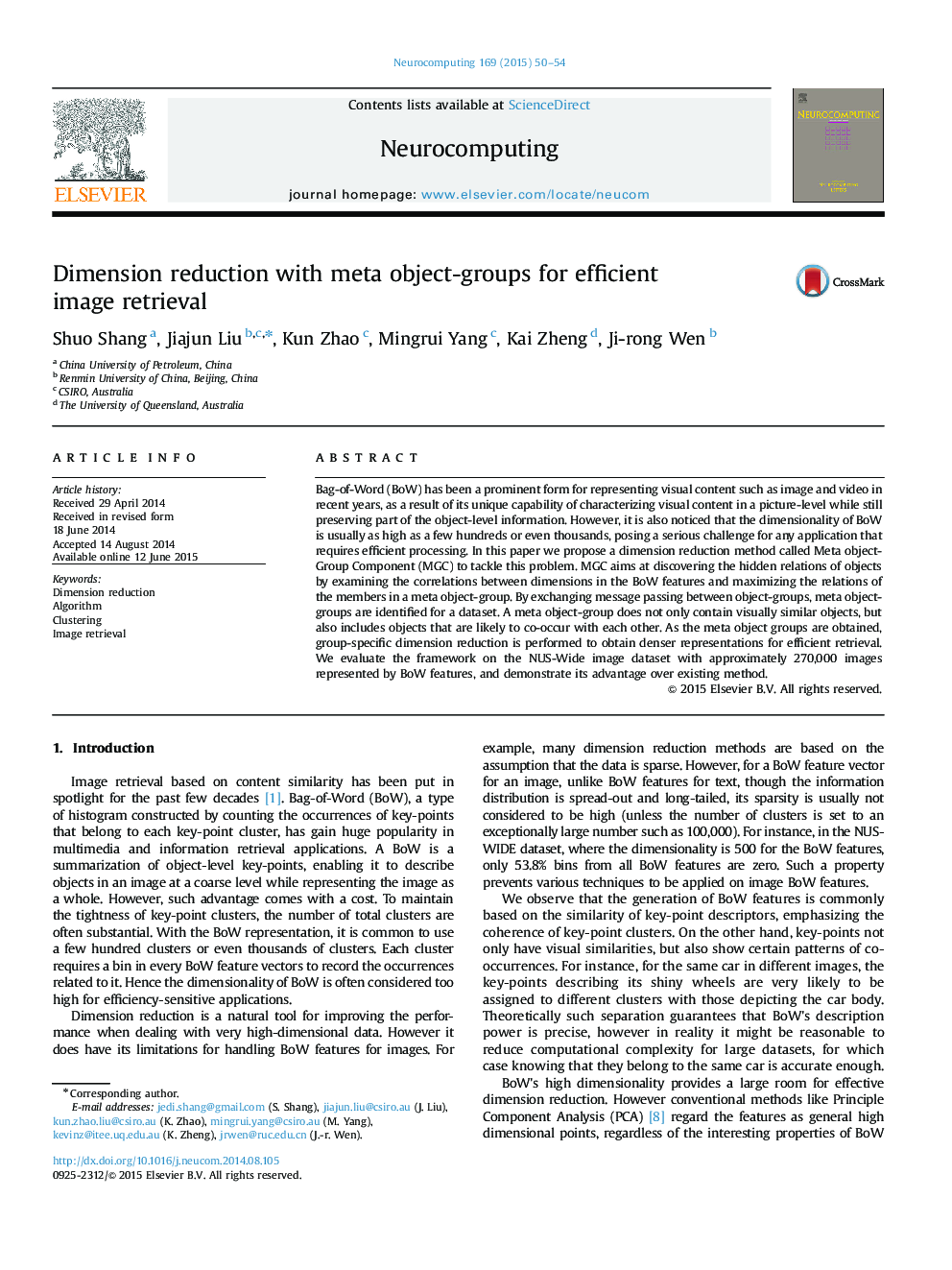| Article ID | Journal | Published Year | Pages | File Type |
|---|---|---|---|---|
| 6865531 | Neurocomputing | 2015 | 5 Pages |
Abstract
Bag-of-Word (BoW) has been a prominent form for representing visual content such as image and video in recent years, as a result of its unique capability of characterizing visual content in a picture-level while still preserving part of the object-level information. However, it is also noticed that the dimensionality of BoW is usually as high as a few hundreds or even thousands, posing a serious challenge for any application that requires efficient processing. In this paper we propose a dimension reduction method called Meta object-Group Component (MGC) to tackle this problem. MGC aims at discovering the hidden relations of objects by examining the correlations between dimensions in the BoW features and maximizing the relations of the members in a meta object-group. By exchanging message passing between object-groups, meta object-groups are identified for a dataset. A meta object-group does not only contain visually similar objects, but also includes objects that are likely to co-occur with each other. As the meta object groups are obtained, group-specific dimension reduction is performed to obtain denser representations for efficient retrieval. We evaluate the framework on the NUS-Wide image dataset with approximately 270,000 images represented by BoW features, and demonstrate its advantage over existing method.
Related Topics
Physical Sciences and Engineering
Computer Science
Artificial Intelligence
Authors
Shuo Shang, Jiajun Liu, Kun Zhao, Mingrui Yang, Kai Zheng, Ji-rong Wen,
